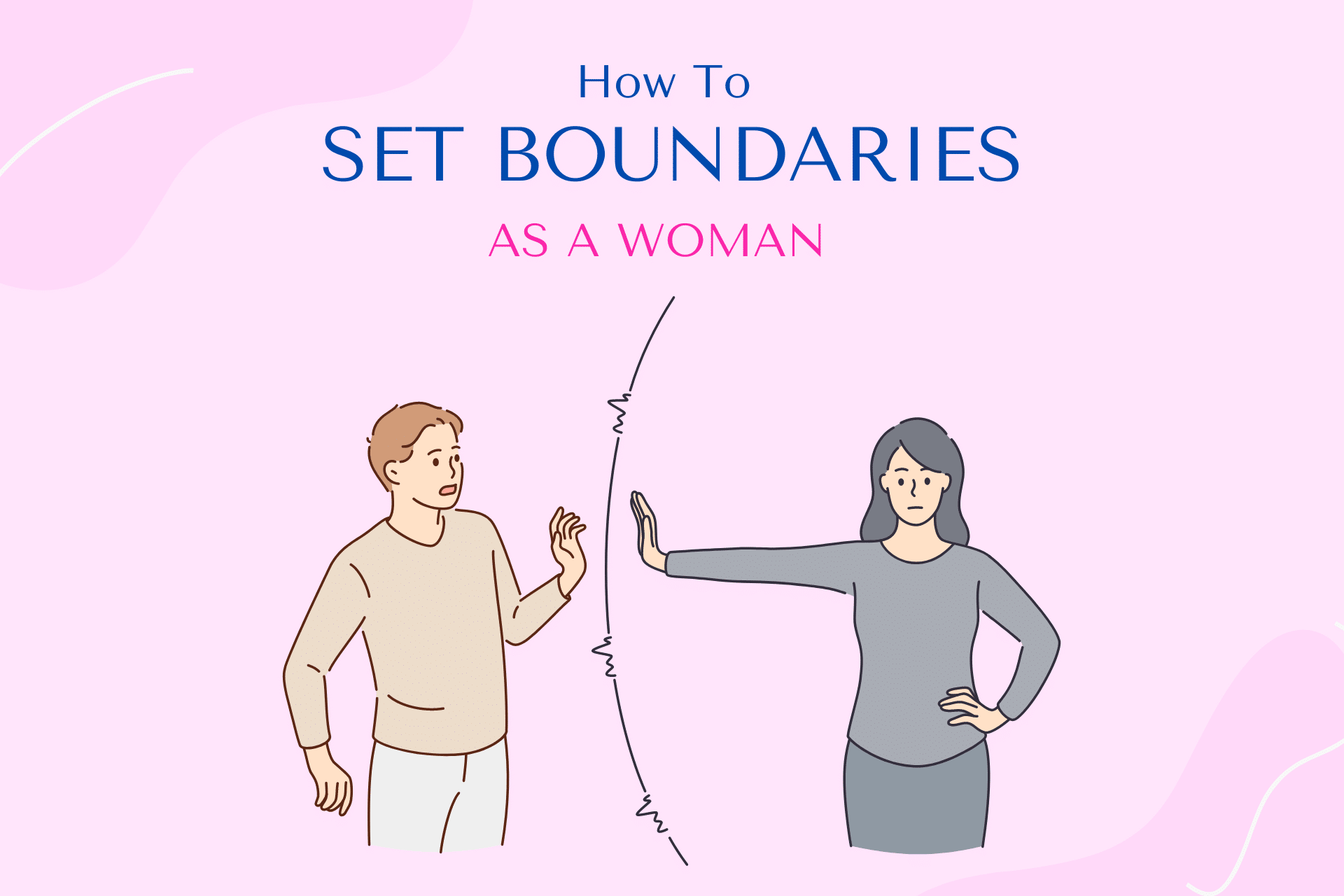The Key to Respecting Your Time and Energy
Picture this: You’re juggling a flurry of responsibilities at work, a bustling home life, and a precious but ever-shrinking sliver of ‘me’ time. Sound familiar?
In our fast-paced world, finding balance can feel like a quest for the Holy Grail. Yet, the key to reclaiming your time, energy, and peace of mind might be simpler than you think. Welcome to the transformative world of boundary setting!
In this guide, we’ll unlock the secrets of how to set boundaries as a woman!
We’ll explore why boundaries are vital, how to identify where you need them, and, most importantly, how to set them effectively.
So, stick around because this could be the game-changer you’ve been waiting for!
Let’s get started!
Here's What You Will Find

Key Takeaways
Empowerment through Boundaries: Setting boundaries isn’t just about saying ‘no’—it’s about saying ‘yes’ to your well-being, self-respect, and personal growth. When you set clear boundaries, you assert control over your time, energy, and emotional space, empowering you to lead a more balanced and fulfilling life.
Better Relationships with Boundaries: Clear boundaries foster healthier, more respectful relationships. They eliminate guesswork, promote mutual respect, and pave the way for open, honest interactions, improving both your personal and professional relationships.
Overcoming Boundary Roadblocks: Fear, guilt, and self-doubt can make setting boundaries challenging. Remember, these feelings are normal and you’re not alone. Stand firm, keep practicing, and be kind to yourself. Your feelings and needs are valid and worth respecting.
The Ripple Effect of Boundary Setting: When you set boundaries, you don’t just transform your own life—you inspire others to do the same. It’s a powerful way to promote self-care, respect, and healthy interactions within your circle, creating a positive ripple effect that extends beyond yourself.
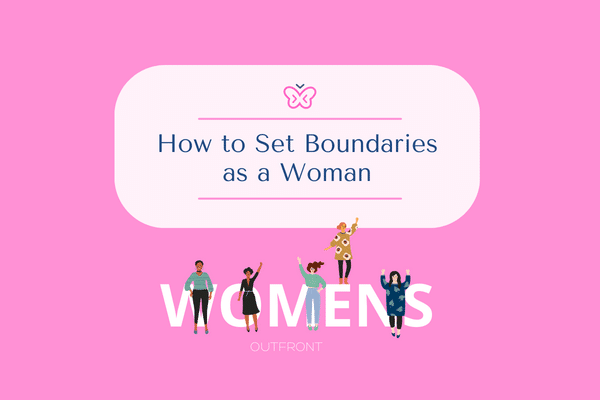
Why is Talking About Boundaries Crucial?
You’re not alone if you’ve ever felt drained, over-committed, or spread too thin. As it turns out, these feelings often stem from a lack of personal boundaries.
Sure, we understand the concept of boundaries in our physical space – we know not to stand too close to the person in line in front of us or not to barge into a meeting room uninvited. But the lines tend to blur when it comes to our emotional and personal spaces.
Why, though, should we put boundaries under the spotlight? Simply put, boundaries are the invisible barriers that protect our well-being. They help us define who we are and what we need, delineating our personal space and preferences. They’re like personal rules or guidelines that communicate to others what’s okay and what’s not okay.
Talking about boundaries is crucial because it helps us maintain a healthy balance in our relationships, whether at work, home, or in our social interactions. They empower us to prioritize our needs and well-being without feeling guilty. Setting and communicating our boundaries can reduce stress, avoid burnout, and improve our overall mental health.
We’ll explore the why and the how – a comprehensive guide on setting boundaries. We’ll also discuss how to maintain them and why it’s okay (more than okay) to do so.
What are Boundaries?
Boundaries are personalized rules or guidelines we establish to identify reasonable, safe, and permissible ways for others to behave toward us. They also determine how we respond when someone steps over these lines. Boundaries allow us to maintain our self-esteem and respect, manage stress effectively, and navigate our personal and professional relationships healthily.

Why Do We Need to Set Boundaries?
Boundaries – they’re more than just a buzzword. They’re a fundamental part of healthy relationships and self-care, but why exactly do we need to set them?
Let’s kick things off with a touch of realism: we all have limits. Our resources are finite: time, energy, or emotional bandwidth. Setting boundaries helps us protect these resources, ensuring we don’t exhaust ourselves catering to the needs, wants, and expectations of others at the expense of our own.
Moreover, boundaries are our personal compass, guiding us through our interactions with others. They help us define how we want to be treated, fostering mutual respect and understanding. Have you ever felt taken for granted or like you’re always the ‘go-to’ person for everything? Setting boundaries can help reduce feelings of resentment and prevent others from taking advantage of our generosity.
Also, think about how much stress we encounter daily. Imagine if we had clear boundaries that shielded us from unnecessary stress?
Boundaries act as our stress-busters, protecting us from overcommitting and offering the much-needed space to rejuvenate.
Finally, boundaries promote autonomy and self-awareness. They help us understand and communicate our needs, desires, and values more effectively. They give us a sense of control and ownership over our lives, allowing us to make decisions that align with our personal and professional goals.
Setting boundaries is like setting the stage for a play where you are the lead character. They provide the structure and ground rules for your interactions, allowing you to express yourself authentically and live life on your terms.
So, the real question here isn’t ‘Why do we need to set boundaries?’. It’s ‘How soon can we start?’
Stay with us to find out!
How Can Setting Boundaries Positively Affect Our Lives?
Good boundaries are the secret sauce to a balanced life. But you might wonder, “What’s the science behind it?” Let’s peel back the layers and see how setting boundaries can have a profound positive impact on our lives.
Personal Armor for Mental and Emotional Well-being
First, boundaries are like our personal armor, protecting our mental and emotional well-being. They help us manage our stress levels by preventing us from becoming overburdened by external demands. Have you ever heard the saying, “You can’t pour from an empty cup?” It’s the same concept.
Boundaries allow us to be more effective in all aspects of our lives by ensuring we don’t deplete our resources.
Improve Relationships
Next, setting boundaries directly contributes to improved relationships. How so? When we clearly communicate our needs and limits, it eliminates guesswork and fosters mutual respect. It paves the way for open, honest, and healthy personal and professional interactions.
Boost Self-esteem and Identity
Boundaries also empower us by enhancing our self-esteem and sense of identity. When we honor our boundaries, we essentially validate our feelings and needs. This boosts our self-confidence and helps us to understand better and appreciate ourselves.
Increased Productivity
Finally, research has shown a correlation between good boundary setting and increased productivity. By determining what we can and cannot take on, we focus our energy on tasks we’re committed to, resulting in increased efficiency and effectiveness.
So, in essence, setting boundaries is like setting ourselves up for success. It’s a testament to the fact that we value ourselves enough to uphold our needs and protect our well-being.
And remember, it’s not a one-time process but an ongoing journey of self-awareness and growth. Up next, we’ll walk you through that journey step by step!
How to Set Boundaries
A Step-by-Step Guide
Step 1: Self-Reflection
What Areas of Your Life Require Better Boundaries?
Before embarking on the journey of building boundaries, it’s essential to establish a strong foundation. Self-reflection is the bedrock upon which you can begin identifying areas in your life that require boundaries.
Take a moment to pause and introspect. Pay attention to your emotions and experiences after interactions with certain individuals. Do you find yourself feeling drained, exhausted, or emotionally taxed? These could be signs that you need boundaries in those relationships.
Similarly, observe how work encroaches upon your personal time. Are you constantly checking emails or taking work-related calls during your supposed downtime? Recognize the impact this has on your well-being and the need to create boundaries to protect your personal space.
Consider other aspects of your life, such as social media usage. Do you find yourself getting overwhelmed or comparing yourself unfavorably to others? Reflect on whether setting boundaries around your social media consumption can help cultivate a healthier mindset.
By identifying the areas in your life that leave you feeling overextended, stressed, or uncomfortable, you gain clarity on where boundaries are needed most. This self-awareness becomes the first crucial step in setting boundaries, as it allows you to focus your efforts and establish limits that address your specific needs.
Remember, self-reflection is an ongoing process. Your boundaries may need to adapt accordingly as you continue to grow and evolve. Regularly check in with yourself to ensure that your boundaries remain aligned with your well-being and serve as effective safeguards against overexertion and stress.
Step 2: Boundary Visualization
How Can You Clearly Envision Your Ideal Boundaries?
Visualizing healthy boundaries in your identified areas means picturing the ideal version of these situations with your needs and limits respected.
For instance, if working late hours burns you out, a potential boundary could be ‘no work-related tasks after 6 pm.’ Now, don’t just make this a rule. Picture yourself ending your workday, shutting down your computer, and devoting the rest of your evening to relaxing or spending time with loved ones.
Imagine the sense of freedom and relief when the clock strikes six, knowing that your work is done for the day. Picture the activities you’ll engage in, whether it’s reading a book, cooking your favorite meal, or watching a movie. Feel the reduced stress, the sense of control over your own time, and the overall satisfaction.
By visualizing these scenarios, you are not just thinking about the boundary but also experiencing the benefits it can offer. The more vividly you can imagine these boundaries, the more they become part of your life’s vision. This makes it easier for you to believe in their importance and to commit to enforcing them.
Step 3: Defining the Boundaries
How Can You Create Clear and Assertive Boundaries?
At this stage, the key is to transform your boundary visualization into explicit, well-defined rules. Ambiguity is the enemy of effective boundaries. If your boundaries are unclear or vague, they are easier to overlook, ignore, or push aside by you and others.
Let’s say one of your identified areas is that you’re working too much on the weekends. Instead of a vague boundary like ‘less work on weekends,’ it’s important to be more precise. A clear, specific boundary could be ‘no work emails after Friday evening until Monday morning.’
This not only provides you with a concrete guideline, but it also sets clear expectations for your colleagues or clients. There’s no room for misinterpretation, and it ensures everyone is on the same page.
By defining your boundaries explicitly, you’re creating a roadmap that directly leads to more respect for your personal time and, ultimately, better work-life balance.
Step 4: Communication
How Can You Effectively Share Your Boundaries With Others?
Communicating your boundaries is just as vital as setting them. After all, if people aren’t aware of your boundaries, they can’t respect them. Being direct, assertive, and respectful in sharing your boundaries with others is essential.
This doesn’t mean you must have an intense, formal conversation every time. It could be as simple as saying, “I’ve decided not to check my work emails over the weekend to balance my work and personal life better.”
Explain why these boundaries are important to you. You might say, “I’ve found that I’m more productive and focused during the workweek when I’ve had a chance to unplug over the weekend completely.”
Keep in mind this isn’t about asking for permission. You’re not negotiating your boundaries; you’re informing others about them. It’s about expressing your needs and decisions clearly and assertively yet considering your relationships. By sharing your boundaries, you’re taking a significant step towards getting them respected and upheld.
Step 5: Consistency and Upholding
How Can You Ensure You Stick to Your Boundaries Over Time?
Maintaining your boundaries is crucial once you’ve set and communicated them consistently. Why? Because if you occasionally let things slide, it can create confusion or the assumption that your boundaries are flexible or negotiable.
For instance, if you’ve set a boundary to not respond to work emails over the weekend, but then you reply to one or two “just this once,” it sends a mixed message. Others might think it’s okay to expect responses from you during off-work hours, making it harder for you to uphold this boundary in the future.
Yes, consistently upholding boundaries can be challenging, especially when starting. You may feel uncomfortable or worry about how others will react. That’s okay. It’s part of the process. Stand firm, even when it’s tough. With time and practice, it will become easier and more natural.
Remember, each time you uphold your boundaries, you strengthen your commitment to self-care and well-being. It’s an investment that will pay off in greater balance, respect, and peace in your life.
Step 6: Boundary Maintenance
How Can You Handle Situations When Someone Crosses Your Boundaries?
Despite your best efforts in communicating your boundaries, some people may still cross them. When this happens, being prepared to reinforce your boundaries assertively is important.
Firstly, recognize that it’s completely normal for boundary violations to occur. It doesn’t necessarily mean that you’ve failed in setting your boundaries. People may unintentionally overstep due to habit, forgetfulness, or lack of awareness.
When someone crosses your boundaries, take a deep breath and address the situation calmly but assertively. Let them know that they’ve crossed a line by respectfully reminding them of your boundary. For example, you could say, “I appreciate your enthusiasm, but I’ve mentioned before that I’m unavailable to discuss work after 8 p.m. Let’s talk about it tomorrow during working hours.”
It’s important to avoid blaming or shaming the other person, as it may lead to defensiveness or strained relationships. Instead, focus on stating your needs and reinforcing the crossed boundary. This assertive approach helps establish your expectations and communicates that you take your boundaries seriously.
Remember, reinforcing your boundaries is a continuous process. Be consistent and firm in upholding your boundaries, even if it requires ongoing reinforcement. Over time, people will learn to respect your boundaries, and you’ll create a healthier dynamic that aligns with your well-being.
Step 7: Practice and Adjustment
As with any new skill, boundary setting requires time, practice, and patience. It’s important to understand that you won’t become a boundary-setting expert overnight. Like learning to ride a bike, you may encounter setbacks or stumble along the way, and that’s perfectly okay.
It’s essential to be patient with yourself during this journey. Recognize that setting and maintaining boundaries is a process of self-discovery and growth. As you navigate different situations and experiences, you’ll better understand your needs, limits, and what works best for you.
Embrace any setbacks as valuable learning opportunities. If you find yourself slipping and not upholding your boundaries as consistently as you’d like, don’t be too hard on yourself. Instead, use those moments as opportunities for reflection and growth. Ask yourself what factors contributed to the setback and how you can better prepare yourself for similar situations in the future.
Refining your boundaries is an ongoing process. As you learn more about yourself and your evolving needs, you’ll have the chance to adjust and fine-tune your boundaries accordingly. What may have worked for you in the past may no longer be as effective, and that’s perfectly normal. Stay open to the possibility of adapting and refining your boundaries as you continue to grow.
With time, practice, and a compassionate approach toward yourself, you’ll become more skilled at setting and maintaining healthy boundaries. Remember, it’s a journey, and the more you invest in this essential skill, the more empowered and fulfilled you’ll become in all areas of your life.
How Can You Continually Refine and Improve Your Boundary-Setting Skills Over Time?
Like any new skill, boundary setting will take time and practice. There may be setbacks, and that’s okay. Be patient with yourself, and keep refining your boundaries as you learn more about what you need. Over time, you’ll become an expert at setting and maintaining healthy boundaries.
And there you have it – your step-by-step guide to building better boundaries! The journey might be challenging, but trust us, it’s well worth the destination. After all, nothing beats the feeling of living life on your terms, right?
So, here’s to stepping into a healthier, happier, and more balanced you!

Boundary Roadblocks: Overcoming Challenges
How Can You Conquer Fear, Guilt, and Self-Doubt in Setting Boundaries?
Setting boundaries isn’t always a walk in the park. Often, we face internal roadblocks like fear, guilt, and self-doubt that can make the journey feel like an uphill climb. But fear not! We’re here to guide you through these challenging emotions and help you pave a smooth path toward healthier boundaries.
Fear
The fear of rejection or damaging relationships can make setting boundaries feel risky. Here’s the truth: Yes, some people might react negatively. But remember, boundaries are a sign of self-respect, and healthy relationships require mutual respect. If a relationship suffers due to you expressing your needs, it may be worth re-evaluating that relationship. So, push past the fear and stand up for your well-being.
Guilt
Do you ever feel like a ‘bad’ friend, partner, or employee when you try to set boundaries? That’s guilt rearing its head. It’s essential to understand that setting boundaries isn’t selfish. It’s a crucial aspect of self-care. You have every right to protect your peace and prioritize your needs. Let go of the guilt and embrace the empowerment that comes with boundary setting.
Self-Doubt
Questions like ‘Am I overreacting?’ or ‘Are my boundaries unreasonable?’ can flood our minds, causing us to doubt ourselves. But remember, you are the best judge of your needs and limits. If something doesn’t feel right to you, then it’s not right for you. Trust yourself and your feelings. They are valid!
Overcoming these roadblocks can take time and patience. But don’t worry; you’re not alone. We all struggle with these feelings when we start setting boundaries.
The key is to stay firm, keep practicing, and be gentle with yourself along the way. And remember, it’s okay to seek professional help if these feelings become overwhelming. You’ve got this, and we’re rooting for you every step of the way!
Successful Boundary Setting: Real-life Inspirations
Who Has Transformed Their Lives Through Setting Boundaries?
Setting boundaries isn’t just something we talk about; it’s a life-changing practice many successful individuals adopt worldwide. Let’s take inspiration from some real-life boundary champions who’ve transformed their lives.
Take Sheryl Sandberg, Facebook’s COO and author of “Lean In,” who famously sets strict boundaries around her personal time. She leaves work at 5:30 p.m. every day to have dinner with her kids, highlighting the importance of work-life balance at the highest professional levels.
Then there’s Oprah Winfrey, who attributes much of her success to the power of setting boundaries. She once said, “You can’t accomplish anything worthwhile if you inhibit yourself. If life teaches you nothing else, know this for sure: When you get the chance, go for it.” And for Oprah, going for it meant setting boundaries that allowed her to pursue her ambitions without compromise.
And let’s not forget Serena Williams, a professional tennis player and successful entrepreneur. She’s set boundaries around media exposure and prioritizes her mental health, demonstrating that boundaries are both possible and critical even in the public eye.
Each of these examples serves as a beacon, guiding us on our journey of boundary setting. If they can do it, so can you!
The Power of Saying No
How Can Saying ‘No’ Empower You?
“No.” It’s a small word, but it can be powerful! Especially when it comes to setting boundaries.
Saying ‘no’ is a fundamental part of setting boundaries. It allows us to reject demands or requests that go beyond our comfort zone or that we don’t have the time or energy for. But how does it empower us?
Firstly, saying ‘no’ allows us to respect and protect our time and energy. It prevents overcommitment and burnout, helping us focus on what truly matters to us.
Secondly, it boosts our self-confidence and self-esteem. Every time we say ‘no’, we validate our own needs and feelings. This affirmation acts as a powerful reminder of our worth.
Lastly, saying ‘no’ gives us control over our lives. It empowers us to decide what we want to participate in, what tasks we take on, and how we spend our time and energy.
Remember, saying ‘no’ isn’t about being rude or unkind. It’s about acknowledging and respecting your limits. So, the next time you’re faced with a demand that breaches your boundaries, harness the power of ‘no’.
You might find it’s the most empowering word in your vocabulary!
How Can Setting Boundaries Create a Ripple Effect in Your Life and Others?
Setting boundaries doesn’t just impact your life—it creates a ripple effect that can positively influence those around you. By asserting your boundaries, you permit others to do the same. It’s a powerful display of self-care and respect that encourages others to prioritize their well-being.
Plus, it fosters healthier, more respectful relationships based on understanding and mutual consent.
What Long-term Impacts Can Effective Boundary Setting Have on Your Life?
The long-term effects of setting boundaries are nothing short of transformational. It allows you to control your time, energy, and emotional space. You’ll find a greater sense of balance in your life, with a marked reduction in stress and burnout.
Moreover, setting boundaries can significantly boost your self-esteem and self-confidence. It’s a profound act of self-affirmation that helps you understand, appreciate, and honor your own needs and feelings. Over time, you’ll feel more empowered, self-assured, and able to navigate your relationships and commitments more effectively.
In the grand scheme of life, setting boundaries is about creating a lifestyle that respects and nurtures your well-being. It’s about taking a stand for your peace, happiness, and personal growth. And trust us, there’s no better investment than investing in yourself.
As we wrap up this boundary-setting journey, remember that it’s a process, not a destination. There will be challenges and learning curves along the way, but with persistence and practice, you’ll become a boundary-setting pro.
So, are you ready to embrace the power of boundaries and step into a more balanced, healthy, and fulfilling life? We believe in you and can’t wait to see the positive changes you’ll usher into your life.
So set those boundaries, and watch as your life transforms!
More on Boundaries
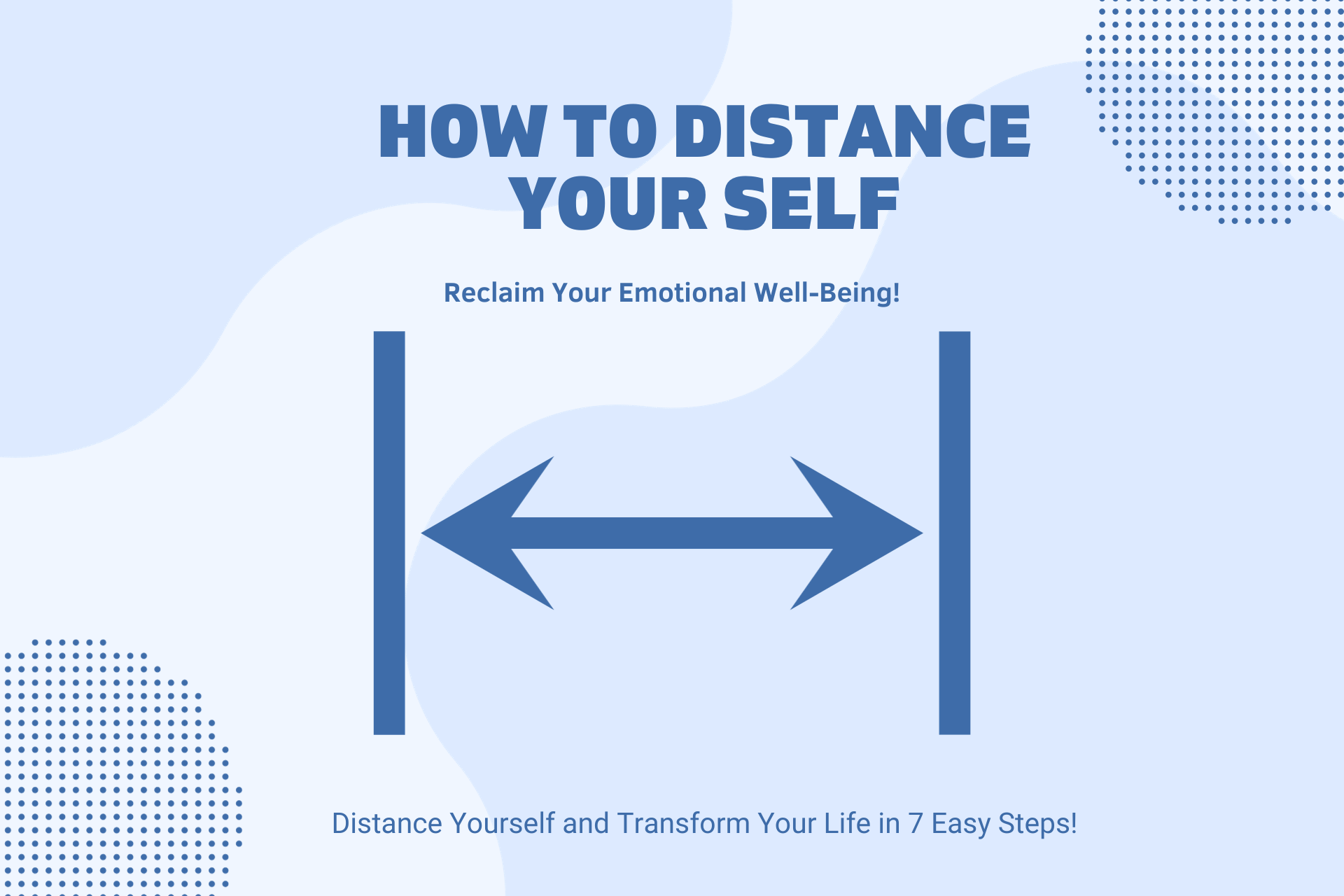
How to Distance Yourself and Reclaim Your Emotional Well-Being!
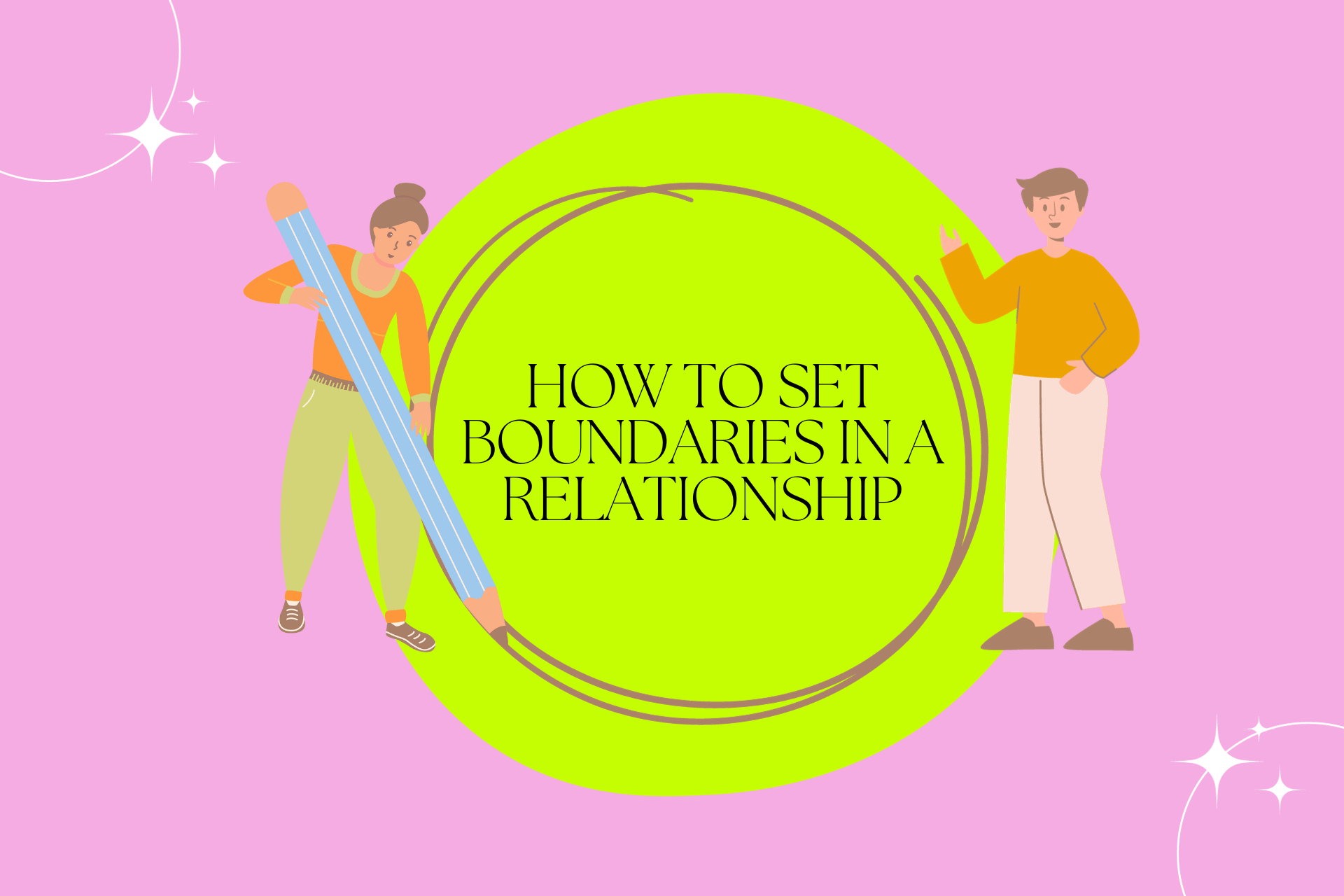
How to Set Boundaries in a Relationship: Transform Your Love Life in Just 10 Simple Steps!
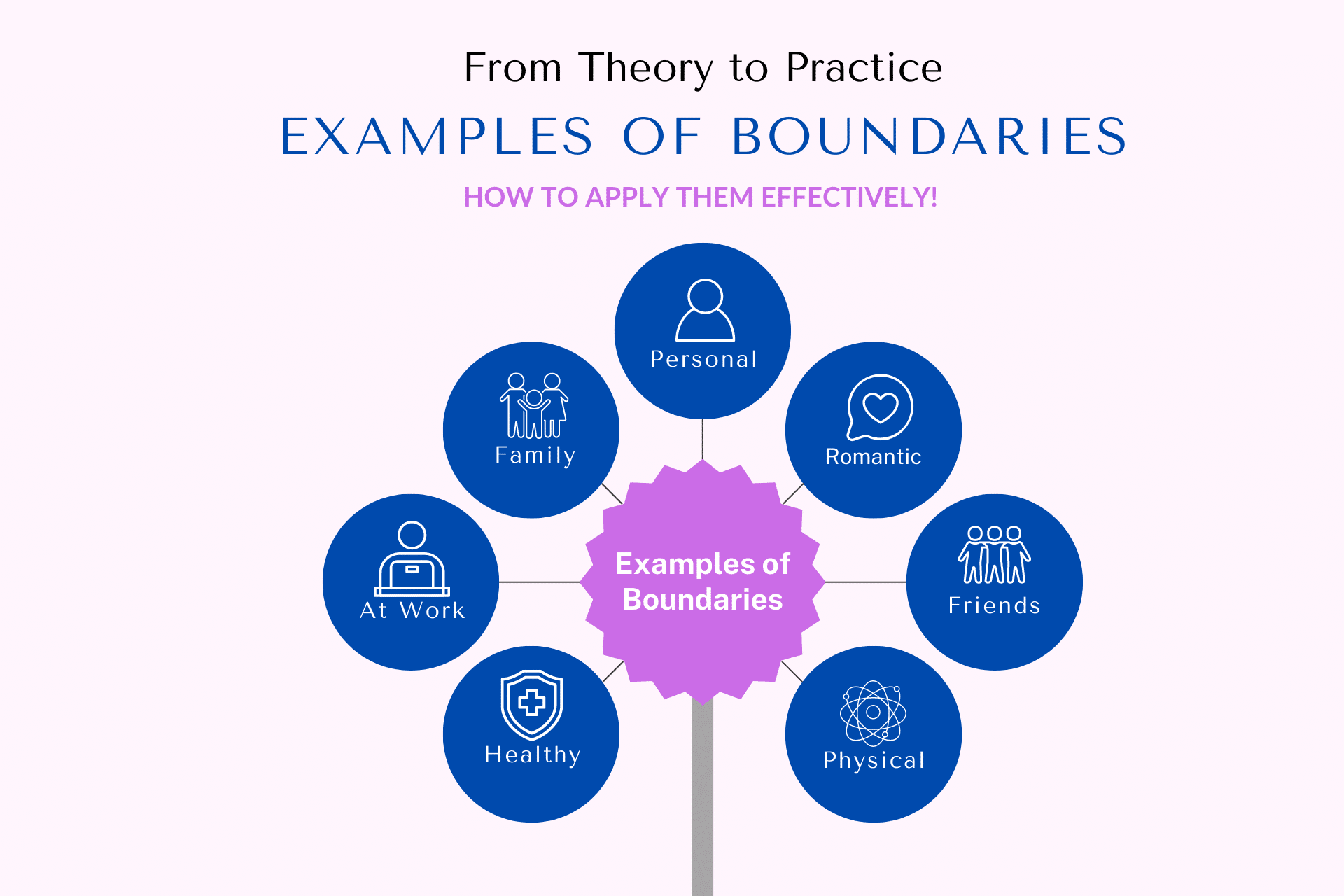
Examples of Boundaries: Set Them Now, Reap the Rewards Forever!

How to Say No: The Game-Changing Skill You Wish You Learned Sooner!
Related Articles
Eat the Frog Technique: Transform Your To-Do List into a Done List!
9 Benefits of Time Management: How to Add More Hours to Your Day and Achieve Your Dreams!
Resilience in Personal Relationships: 5 Surprising Ways It Can Reignite Your Love Life
10 Essential Needs in a Relationship: Discover What Can Really Make or Break Your Love Life
Life Partner vs. Long-Term Relationship: 10 Shocking Differences You Need to Know!



